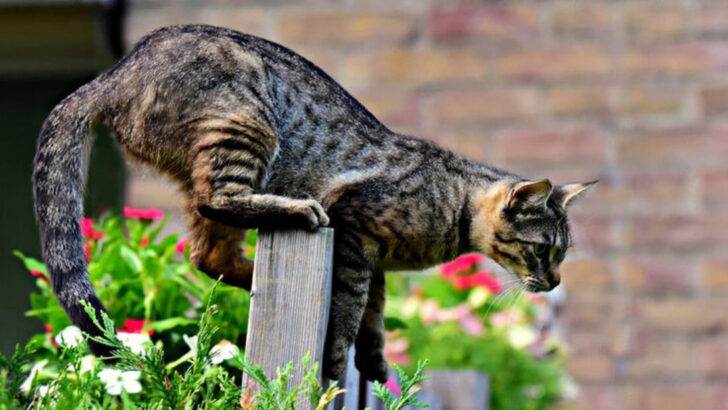Stray cats may look cute from the window—until they turn your yard into their personal hangout spot.
Scratched patio furniture. Midnight yowling. That mysterious “gift” left on your welcome mat.
If you’re feeling torn between loving cats and wanting your space back, you’re not alone.
The good news? You don’t need to resort to harsh tactics or scary gadgets.
There are simple, natural ways to make your yard less appealing without hurting a whisker.
And yes, they actually work.
So grab your citrus peels, sprinkle that coffee ground magic, and let’s reclaim your garden—peacefully.
Lavender Planting
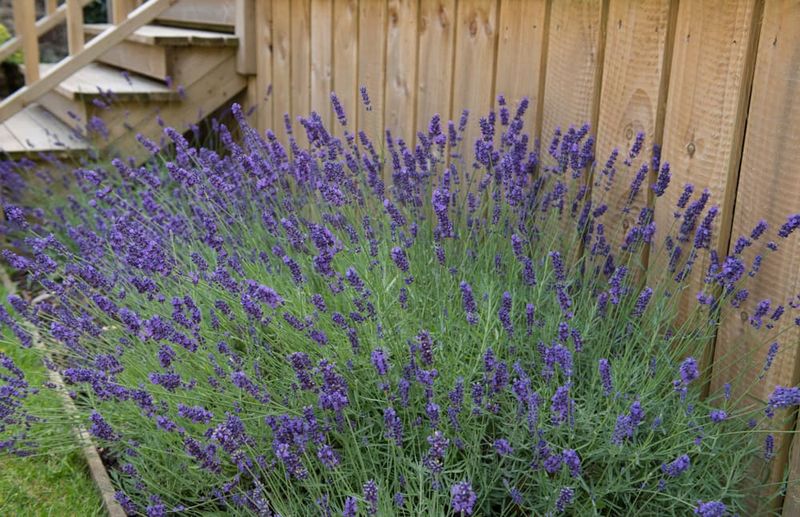
Lavender’s enchanting aroma, while soothing to humans, is often detested by cats. Planting lavender around your garden can create a natural barrier that keeps curious felines at bay. These purple blooms not only add a touch of beauty but also offer a fragrant solution to stray cat issues. With a history of calming effects, lavender has been a staple in gardens for centuries. By incorporating lavender into your landscape, you’re inviting tranquility while gently guiding stray cats to find another place to explore. It’s a win-win for both gardeners and wildlife alike.
Citrus Peels

Citrus peels, with their zesty scent, serve as an excellent deterrent for stray cats. These peels, when scattered around garden beds or entry points, can dissuade cats from venturing further. The natural oils in citrus are unpleasant to a cat’s sensitive nose, making them think twice before entering. Not only do citrus peels offer a fresh aroma to your yard, but they also help in repelling unwanted feline guests. This method is both eco-friendly and cost-effective, utilizing kitchen scraps that might otherwise go to waste.
Motion-Activated Sprinklers
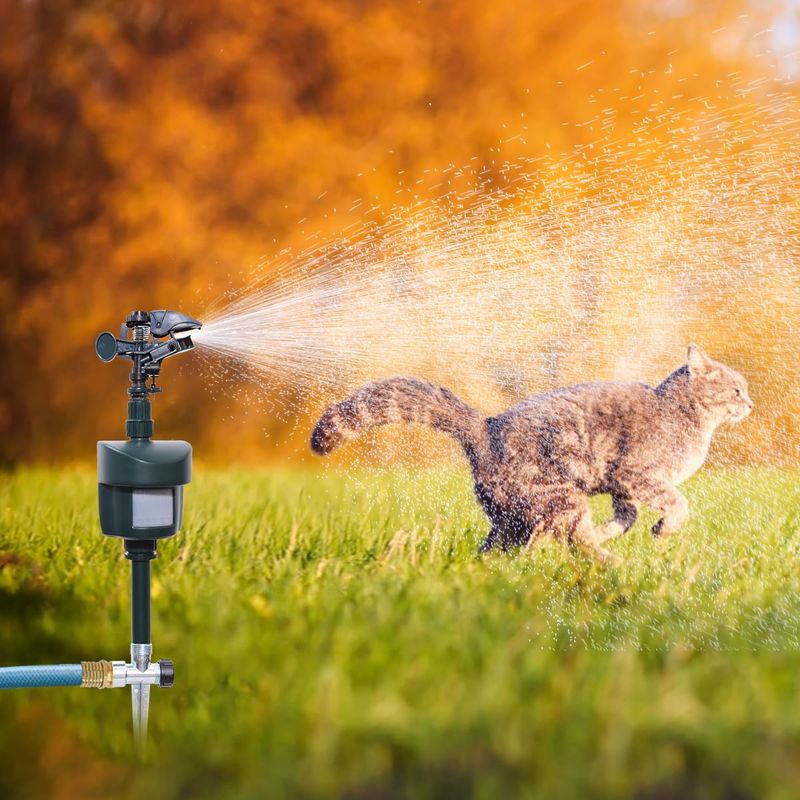
Investing in motion-activated sprinklers can provide an effective solution to the stray cat problem. These devices release a quick burst of water when they detect movement, startling but not harming the cat. It’s a harmless way to train cats to steer clear of your property. Not only does it protect your garden, but it also conserves water by only activating when needed. The gentle surprise of water can quickly teach cats that your yard isn’t the best place to hang out. Plus, it adds a playful element to yard maintenance.
Rosemary Bushes

Rosemary’s robust fragrance is another natural deterrent for cats. These hardy bushes are not only easy to grow but also add a delightful aroma to your garden. By planting rosemary along pathways or garden borders, you create a fragrant barrier that cats might choose to avoid. Rosemary’s historical significance in culinary and medicinal uses makes it a versatile addition to any yard. Its continuous growth throughout the year ensures that your garden remains both aromatic and cat-free, offering a simple yet effective solution.
Coffee Grounds
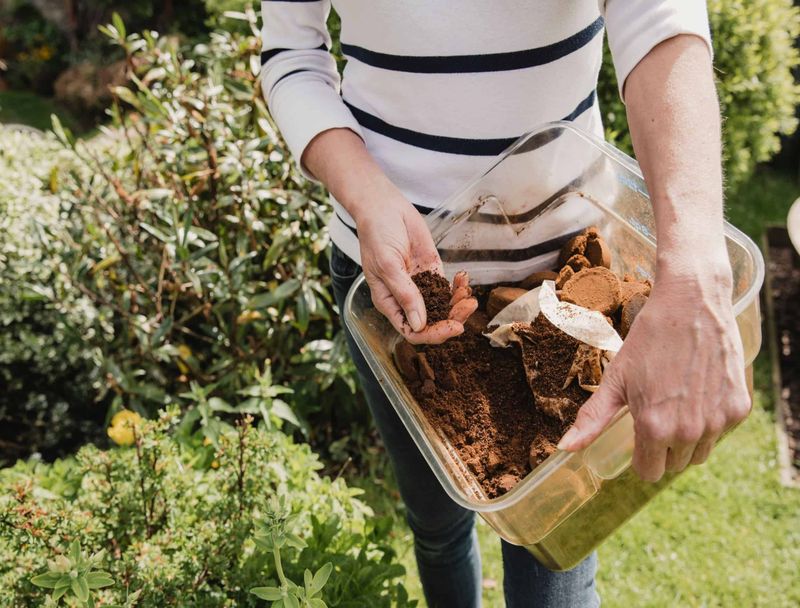
Recycling coffee grounds is a sustainable way to deter stray cats from your yard. The strong scent of coffee is often unappealing to cats, making it an excellent natural repellent. Sprinkling used coffee grounds around your garden beds not only helps in keeping cats away but also enriches the soil with nutrients. This dual benefit of repelling and fertilizing makes coffee grounds a favorite among eco-conscious gardeners. With each cup of coffee, you’re contributing to a cat-free garden environment, making it a rewarding habit to develop.
Essential Oils
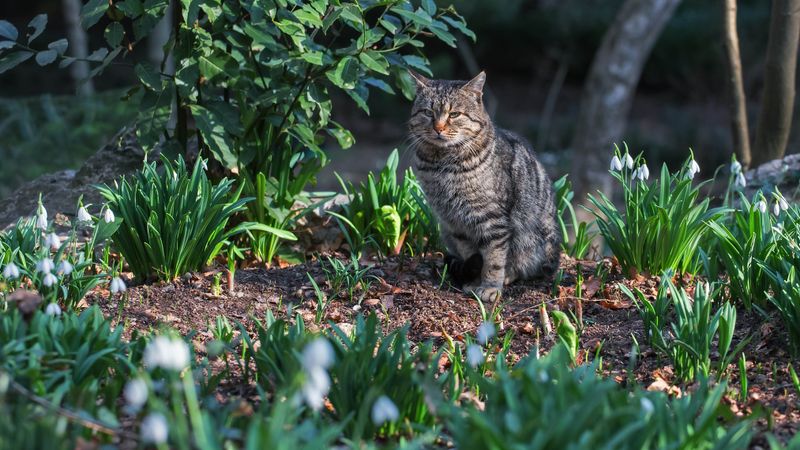
Essential oils such as eucalyptus and peppermint can create an aromatic shield against stray cats. By diluting these oils with water and spraying them around your yard, you form an invisible barrier that cats find unpleasant. This natural method not only repels felines but also leaves your garden smelling fresh. Essential oils are potent, so a little goes a long way in maintaining a cat-free zone. The added benefit of aromatherapy for humans makes this approach both soothing and practical, integrating wellness into your outdoor space.
Scarecrow Owl
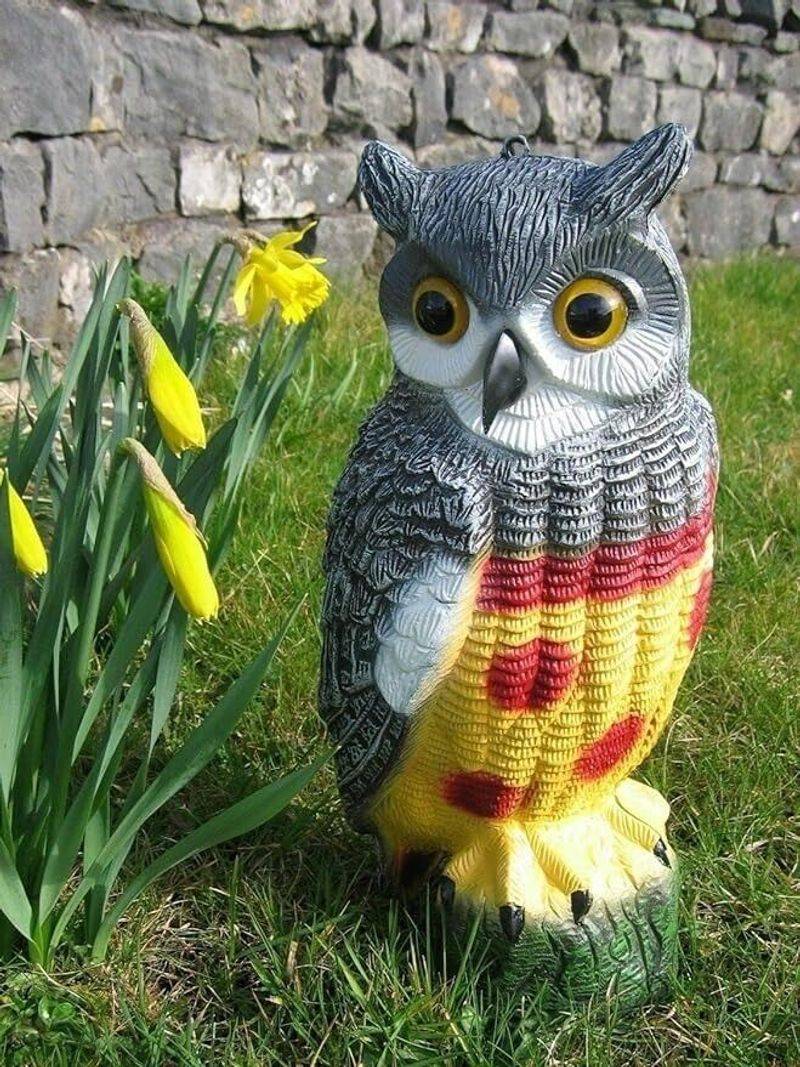
Deploying a scarecrow owl can be a clever tactic in deterring stray cats. These lifelike models, when strategically placed, can mimic the presence of a predator, causing cats to think twice before entering your yard. The reflective eyes and realistic features make them an effective deterrent. While they add a whimsical touch to your garden, they serve a functional purpose. The presence of a scarecrow owl can deter not just cats but other small animals, safeguarding your garden and creating a peaceful outdoor environment.
Cat-Proof Fencing
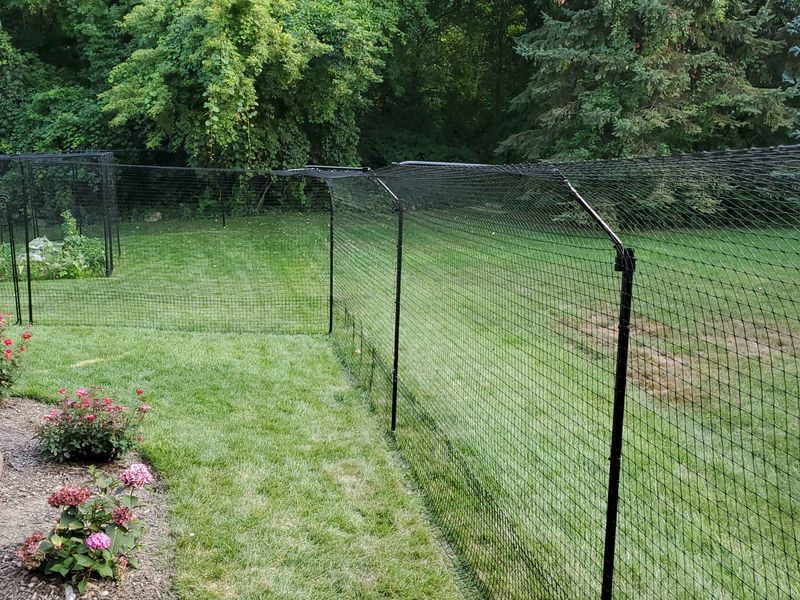
Cat-proof fencing offers a physical barrier that prevents stray cats from entering your yard. These specially designed fences have features like angled tops or roller bars, making it difficult for cats to climb over. Installing cat-proof fencing gives you control over your garden’s boundaries while maintaining a welcoming environment for desired wildlife. The investment in such fencing not only protects your plants but ensures peace of mind, knowing that your yard remains cat-free. This solution combines security with aesthetics, enhancing the overall look of your property.
Vinegar Spray
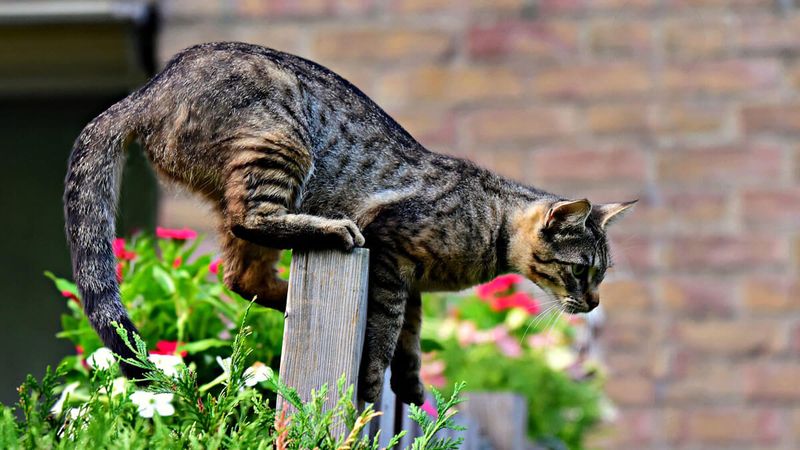
Vinegar spray acts as a powerful natural deterrent due to its strong scent. Mixing vinegar with water and spraying it around the perimeter of your yard can discourage stray cats from visiting. The acetic acid in vinegar is unpleasant to cats, making them rethink their territory choice. This cost-effective method is easy to prepare and apply, offering a straightforward approach to maintaining a cat-free garden. While the smell may be strong initially, it dissipates quickly for humans but remains a deterrent for felines.
Ultrasonic Devices

Ultrasonic devices emit high-frequency sounds that are inaudible to humans but unsettling for cats. Placing these devices around your yard can create a sonic boundary that deters cats without causing harm. As a humane solution, it respects the natural instincts of cats while protecting your garden. Their discreet design allows them to blend into any landscape, offering an unobtrusive way to maintain a peaceful yard. This advanced technology is not only efficient but also an innovative way to address stray cat challenges.
Prickly Plants
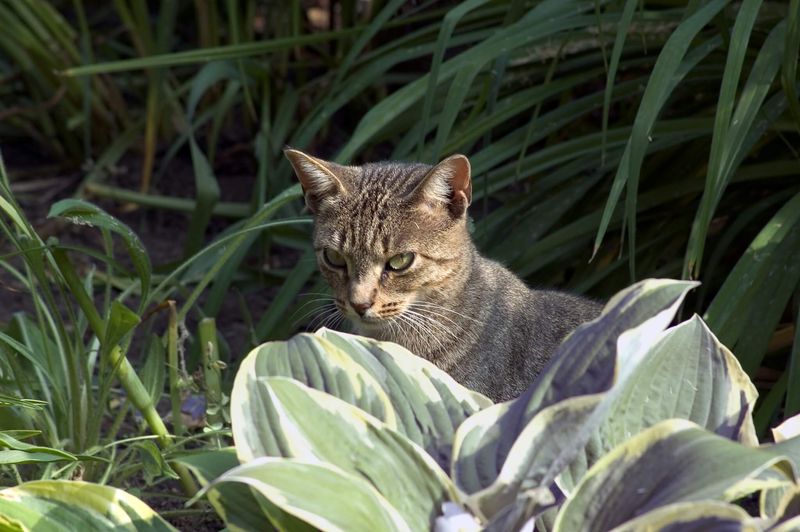
Incorporating prickly plants like holly and rose bushes can naturally deter stray cats. These plants, with their thorny textures, create an uncomfortable terrain for cats to navigate, discouraging them from entering. Beyond their deterrent properties, they add beauty and structure to gardens. The strategic placement of such plants around borders or vulnerable areas can enhance your garden’s defenses. Prickly plants offer a dual benefit of aesthetic value and protection, making them a wise choice for gardeners seeking to maintain a cat-free environment.
Scented Geraniums
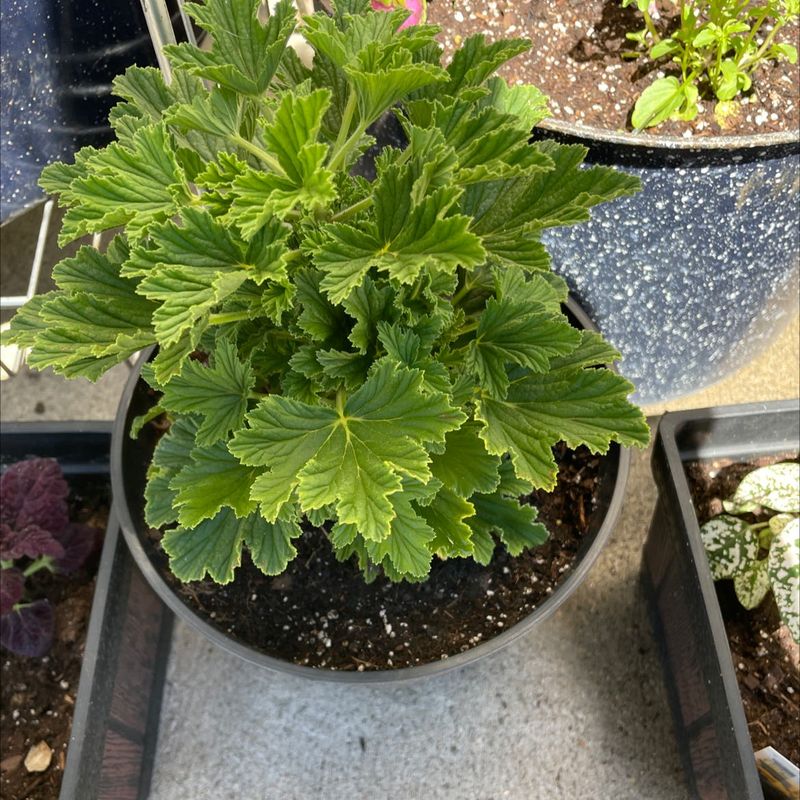
Scented geraniums release a fragrance that, while pleasant to humans, is often disliked by cats. Planting these in your garden can add an aromatic layer of protection against stray cats. Their colorful blooms contribute to the visual appeal of your yard, making them a popular choice among gardeners. These plants are easy to care for, offering a low-maintenance solution to cat intrusion problems. With their dual role as a natural deterrent and decorative element, scented geraniums are a valuable addition to any garden setting.

